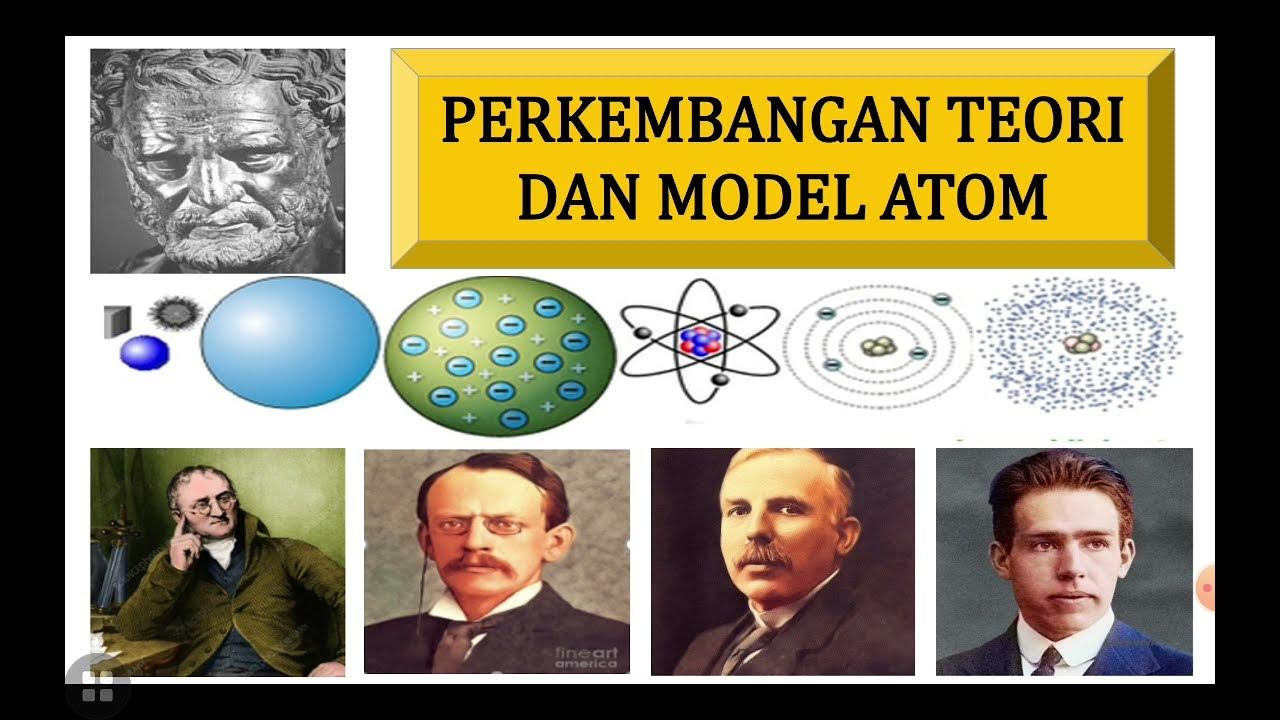PARTIKEL PENYUSUN ATOM (isotop, isoton, isobar & isoelektron)
Summary
TLDRThe video discusses the development of atomic theory, beginning with early philosophers like Democritus and Aristotle and advancing to modern quantum mechanics. It explains that atoms consist of subatomic particles: protons, neutrons, and electrons. The video highlights atomic structure, explaining atomic number, mass number, isotopes, ions, and concepts like cations and anions. It uses calcium as an example to demonstrate ion formation through electron gain or loss. Additionally, it explains isotopes, isobars, isotrons, and isolectrons, comparing different elements based on these characteristics.
Takeaways
- 🔬 The evolution of atomic theory has progressed from philosophers like Leucippus, Democritus, and Aristotle to modern quantum mechanics.
- ⚛️ Atoms are not the smallest particles; they consist of subatomic particles: protons, neutrons, and electrons.
- ➕ Protons are positively charged particles located in the atomic nucleus.
- 🟰 Neutrons are neutral particles also found in the nucleus.
- ➖ Electrons are negatively charged particles that orbit around the nucleus in electron shells.
- 🔢 The atomic number (Z) represents the number of protons and electrons (in a neutral atom), while the mass number (A) is the sum of protons and neutrons.
- 🧮 Electrons can move between energy levels and even between atoms, leading to the formation of ions (cations and anions).
- 🔀 Isotopes are atoms of the same element with the same atomic number but different mass numbers due to varying neutrons.
- ⚖️ Isobars are atoms with the same mass number but different atomic numbers.
- ⚙️ Isoelectrons are atoms or ions that have the same number of electrons.
Q & A
What are the three subatomic particles that make up an atom?
-The three subatomic particles are protons, neutrons, and electrons.
Where are protons and neutrons located within an atom?
-Protons and neutrons are located in the nucleus of the atom.
What is the charge of a proton and an electron?
-A proton has a positive charge, while an electron has a negative charge.
How can you determine the number of protons in an atom?
-The number of protons in an atom is equal to the atomic number, which is represented by the symbol Z.
How do you calculate the number of neutrons in an atom?
-The number of neutrons is calculated by subtracting the atomic number (Z) from the atomic mass (A).
What happens when an atom loses or gains electrons?
-When an atom loses electrons, it becomes a positively charged ion (cation). When it gains electrons, it becomes a negatively charged ion (anion).
What are isotopes, and how do they differ from one another?
-Isotopes are atoms of the same element with the same number of protons but different numbers of neutrons, which gives them different atomic masses.
What are isobars, and how do they differ from isotopes?
-Isobars are atoms that have the same atomic mass but different atomic numbers, meaning they are different elements with the same total number of protons and neutrons.
What is an isoton, and how is it defined?
-Isotons are atoms that have the same number of neutrons but different numbers of protons, making them different elements with similar neutron counts.
What is the significance of isolectrons, and how do they relate to atoms and ions?
-Isoelectrons are atoms or ions that have the same number of electrons, even though they may differ in charge or atomic number.
Outlines

このセクションは有料ユーザー限定です。 アクセスするには、アップグレードをお願いします。
今すぐアップグレードMindmap

このセクションは有料ユーザー限定です。 アクセスするには、アップグレードをお願いします。
今すぐアップグレードKeywords

このセクションは有料ユーザー限定です。 アクセスするには、アップグレードをお願いします。
今すぐアップグレードHighlights

このセクションは有料ユーザー限定です。 アクセスするには、アップグレードをお願いします。
今すぐアップグレードTranscripts

このセクションは有料ユーザー限定です。 アクセスするには、アップグレードをお願いします。
今すぐアップグレード5.0 / 5 (0 votes)






